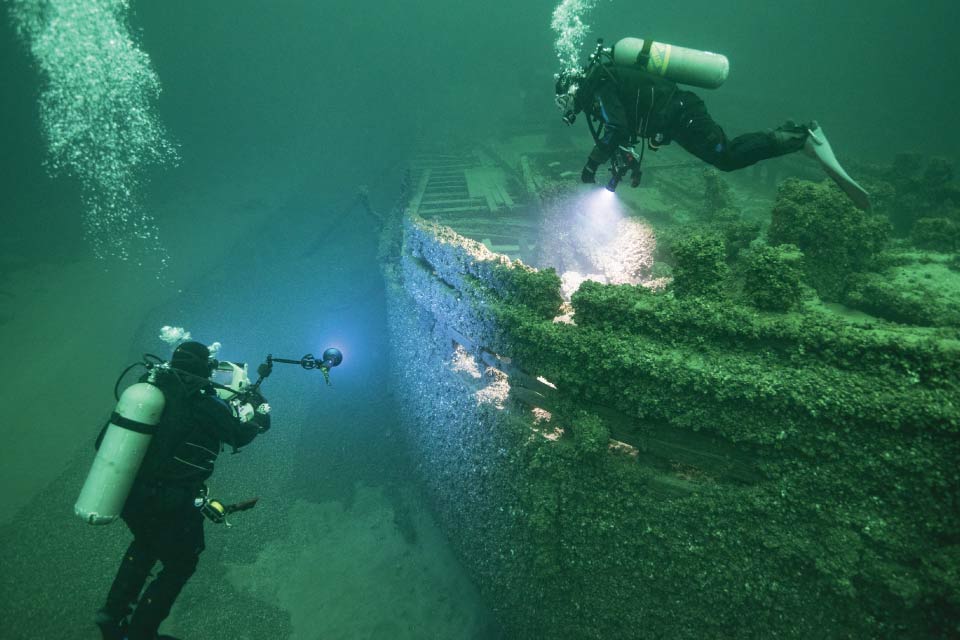What is maritime heritage?
Maritime heritage preserves and protects valuable historical, cultural, and archaeological resources within our coastal, marine, and Great Lakes environments.

The study of maritime heritage resources may include photo-documentation and archaeological site plans.
Maritime heritage includes not only physical resources such as historic shipwrecks and prehistoric archaeological sites, but also archival documents and oral histories. Maritime heritage can also include the stories of indigenous cultures that have lived and used the oceans for thousands of years.
There is a maritime heritage component in each of our national marine sanctuaries and two national monuments, whether this is a shipwreck or study of indigenous cultures. The first sanctuary that was created with a maritime heritage component was the Monitor National Marine Sanctuary off the coast of North Carolina in 1975.
Maritime heritage resources are best studied without disturbing them and leaving them in place. In some rare cases, careful archaeological recovery followed by long-term conservation is done to preserve these artifacts in a museum for future generations.
Maritime heritage resources, when properly studied and interpreted, add an important dimension to our understanding and appreciation of our nation’s rich maritime legacy, and make us more aware of the critical need for us to be wise stewards of our ocean planet.
Social